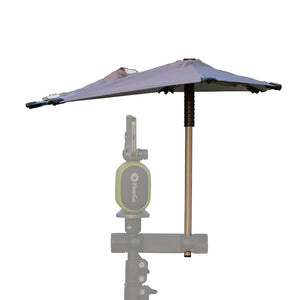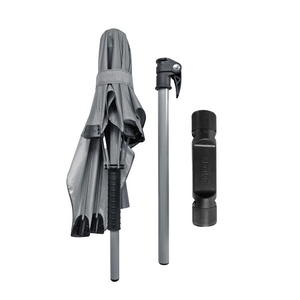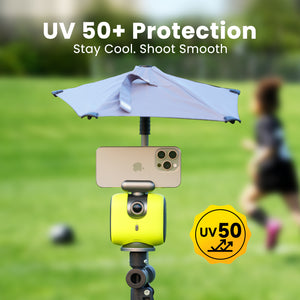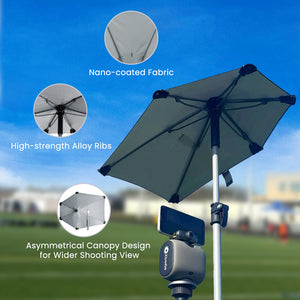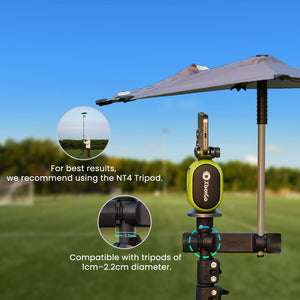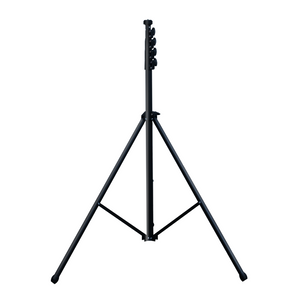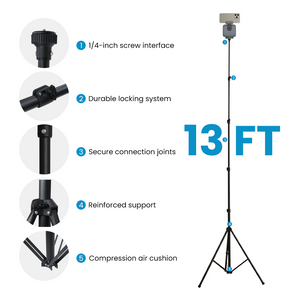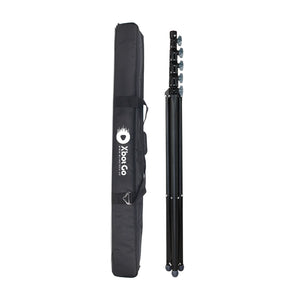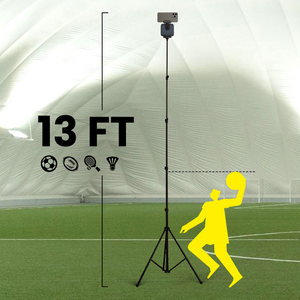XbotGo Chameleon AI Sports Camera
How Tall Are Hockey Players? Complete Size Guide by Position
Ever wonder why you feel like you're watching giants glide across the ice when you tune into an NHL game? You're not imagining it—according to official NHL.com data from 1,502 active players, the average height of an NHL player stands at an impressive 6 feet 1.09 inches (185.67 centimeters). That's more than 4 inches taller than the average North American male, creating a league where size meets skill in spectacular fashion.
Current NHL Height Statistics
The modern NHL presents a fascinating study in human athleticism, where players tower over the general population while maintaining the speed and agility of much smaller athletes. Today's average NHL player at 6'1" represents a careful balance between size and skill that has evolved over more than a century of professional hockey.
When we compare this to other major sports, hockey players fall right in the middle. They're significantly shorter than NBA players (who average around 6'6") but taller than NFL players (averaging just over 6'0"). This positioning makes sense when you consider hockey's unique demands—players need enough size to withstand physical contact while maintaining the agility to maneuver on skates at high speeds.
What's particularly interesting is that these measurements have remained relatively stable since 2005, suggesting the NHL may have found its optimal size range. Unlike the continuous growth seen in basketball, hockey appears to have reached a point where additional height offers diminishing returns.
Historical Height Evolution in Hockey
The story of player height in the NHL reads like a growth chart of the sport itself. Back in 1917, when the league first began, the average player stood around 5'8"—roughly the same as the general population at that time. This dramatic increase of over 5 inches in a century tells us as much about nutrition and training advances as it does about the changing nature of the game.
The most significant growth spurt occurred between the 1970s and early 2000s. During this period, the average height jumped from about 5'11" to today's 6'1", with the peak occurring around the 2004-05 lockout. This wasn't coincidental—the game during this era increasingly favored larger, more physical players who could dominate through size and strength.
However, something interesting happened after 2005. The NHL implemented rule changes to increase scoring and reduce obstruction, fundamentally altering how the game was played. Suddenly, speed and skill became more valuable than pure size. Since then, average player height has actually decreased slightly, settling into what appears to be an optimal range that balances physical presence with mobility.
This evolution reflects a broader truth about professional sports: when rules change, so do the athletes. The post-lockout NHL rewards players who can think and move quickly, regardless of whether they're 5'9" or 6'4". It's a lesson in adaptation that extends far beyond the rink.
Position-by-Position Height Analysis
Goalies - The Tallest Players
Standing at an average of 6'2.69", goaltenders represent the tallest position in hockey, and for good reason. When you're tasked with protecting a 6-foot by 4-foot net, every inch of height translates to more coverage area. Modern goalies like Ben Bishop (6'7") and Devan Dubnyk (6'6") can cover the top corners of the net while in the butterfly position—something their shorter predecessors could only dream of.
But height isn't everything in the crease. Juuse Saros of the Nashville Predators stands just 5'11"—nearly 4 inches below the average—yet consistently ranks among the league's best goaltenders. His success comes from exceptional positioning, lightning-quick reflexes, and an almost supernatural ability to track pucks through traffic. Saros proves that while height provides obvious advantages, it can't replace hockey sense and athletic ability.
The trend toward taller goalies shows no signs of slowing. Some hockey analysts joke that we'll see 7-foot goalies by 2040, and while that may be hyperbole, the position continues to favor height more than any other on the ice.
Defensemen - Size vs. Mobility
At 6'1.54" on average, defensemen split the difference between forwards and goalies, reflecting their dual role as both physical deterrents and puck-moving playmakers. The position has traditionally favored size—think Zdeno Chara at 6'9" using his telescopic reach to break up plays—but the modern game increasingly rewards mobility.
Today's most dominant defensemen often succeed despite being "undersized." Colorado's Cale Makar (5'11") won the Norris Trophy as the league's best defenseman through elite skating and hockey IQ. Vancouver's Quinn Hughes (5'10") quarterbacks one of the NHL's most dangerous power plays despite giving up several inches to most opponents.
These smaller defenders compensate through superior positioning and timing. Where a 6'4" defenseman might use reach to poke check an opponent, Hughes or Makar use their edges to maintain optimal gap control, forcing attackers to the outside without ever needing to extend their sticks. It's a different style of defense, but equally effective.
Forwards - Skill Over Size
Forwards, averaging 6'0.54", are the shortest players on the ice, and this makes perfect sense when you consider their job requirements. While defensemen can often get by on reach and positioning, forwards need to be dynamic—constantly changing direction, accelerating through tight spaces, and maintaining puck control in traffic.
The forward position offers perhaps the best evidence that hockey has moved beyond simple "bigger is better" thinking. Some of the game's most dominant players are well below average height. Johnny Gaudreau (5'9") has built a career on elusiveness. Nathan MacKinnon, while standing at 6'0", succeeds through explosive speed rather than physical dominance.
Even more telling is the success of players like Mats Zuccarello (5'8") and Yanni Gourde (5'9"), who play intensely physical games despite their smaller stature. They've mastered the art of "playing big"—using leverage, timing, and fearlessness to win battles against much larger opponents.
How Shorter Players Succeed in Modern Hockey
The concept of "playing big" deserves special attention because it represents one of hockey's most important evolutions. Size provides certain inherent advantages—reach, leverage, and mass—but these can be neutralized or even overcome through technique and intelligence.
Shorter players typically develop several key adaptations. First, they master the use of leverage, getting lower than opponents to win puck battles along the boards. Think of it like wrestling—the lower man often has the advantage, regardless of height difference. They also tend to be exceptional skaters, using quick edges and explosive acceleration to create space that taller players might achieve through reach alone.
Perhaps most importantly, successful shorter players consistently demonstrate superior hockey IQ. When you can't simply reach around an opponent to steal the puck, you must anticipate where it's going. Players like Brad Marchand (5'9") succeed by thinking two moves ahead, positioning themselves to intercept passes rather than chase pucks.
Training for shorter players has evolved to emphasize these strengths. Modern development programs focus on edge work, core strength, and spatial awareness. Coaches teach smaller players to use their low center of gravity as an advantage, making them harder to knock off the puck. They also emphasize the importance of playing fearlessly—hesitation is deadly when you're giving up 6 inches and 30 pounds to your opponent.
The mental aspect cannot be overstated. Every undersized player who reaches the NHL has heard they're "too small" countless times throughout their career. Those who succeed develop an unshakeable confidence and often play with a chip on their shoulder that makes them more dangerous than players who've never had to prove themselves in quite the same way.
International Differences
The height dynamics in hockey change dramatically when you cross the Atlantic. European hockey, played on larger ice surfaces (200 feet by 100 feet compared to North America's 200 by 85), creates a different environment where speed and skill often matter more than size.
This difference in playing surface has profound implications for player development. With an extra 15 feet of width, European rinks offer more space to maneuver, reducing the frequency of board battles where size provides the greatest advantage. As a result, European leagues have traditionally been more welcoming to smaller, skilled players who might struggle in the more confined North American game.
The contrast is evident in international tournaments. When NHL players compete on Olympic-sized ice, the game's dynamics shift noticeably. Smaller, quicker players suddenly find themselves with extra time and space to make plays, while larger, more physical players may struggle with the increased skating demands.
This has led to different drafting philosophies among NHL teams. European scouts often look for different attributes than their North American counterparts, focusing more on skating ability and hockey sense than pure physical tools. It's no coincidence that many of the NHL's most successful "undersized" players—from Pavel Datsyuk to Patrick Kane—played significant time on larger ice surfaces during their development.
Conclusion
The NHL's 6'1" average height represents hockey's evolution from a size-focused game to one emphasizing skill and speed. While height provides advantages, today's league includes successful players ranging from 5'4" to 6'9". For aspiring players, the message is clear: hockey success depends more on how you play than how tall you stand. As the game continues evolving through analytics and rule changes, we'll likely see even greater diversity in player sizes, making hockey more accessible while remaining thrilling to watch.
XbotGo Chameleon AI Sports Camera
Capture every moment with AI-powered tracking. Perfect for coaches, parents, and athletes who want seamless footage without manual filming.







 Soccer
Soccer Basketball
Basketball Ice Hockey
Ice Hockey Rugby
Rugby










